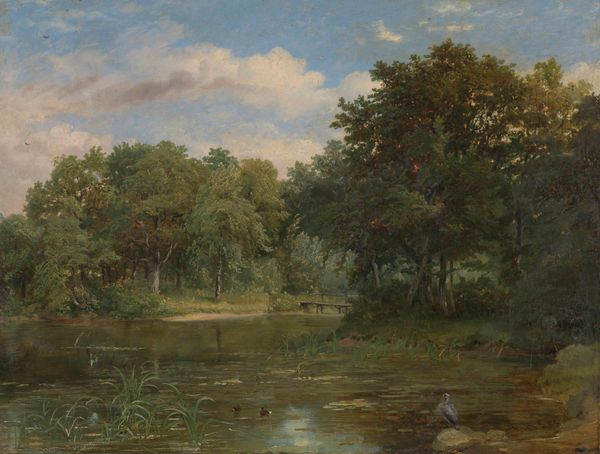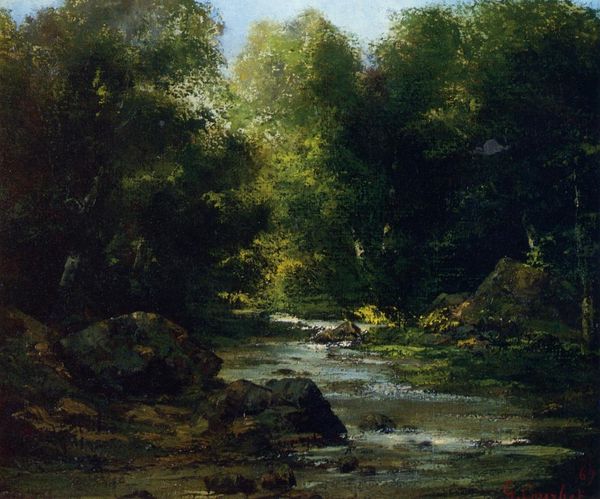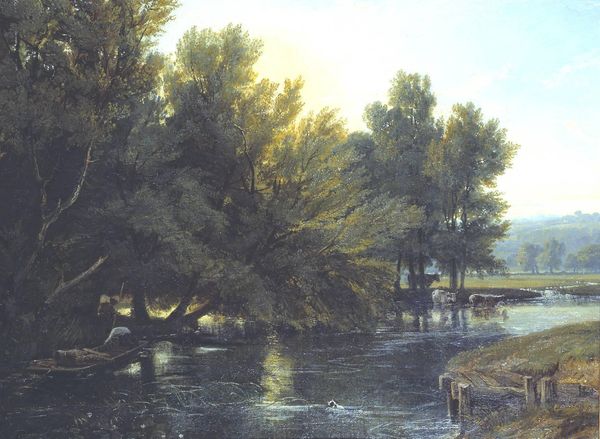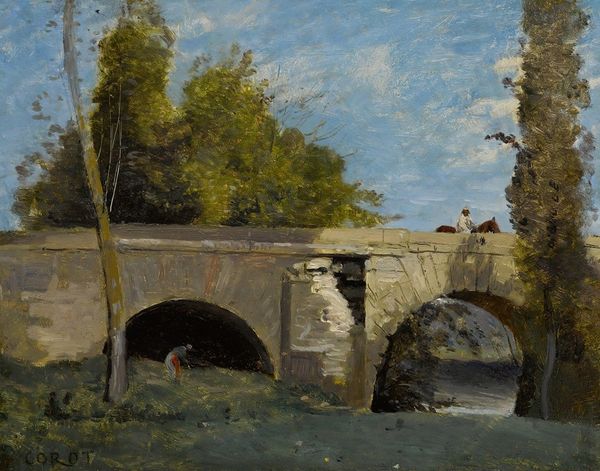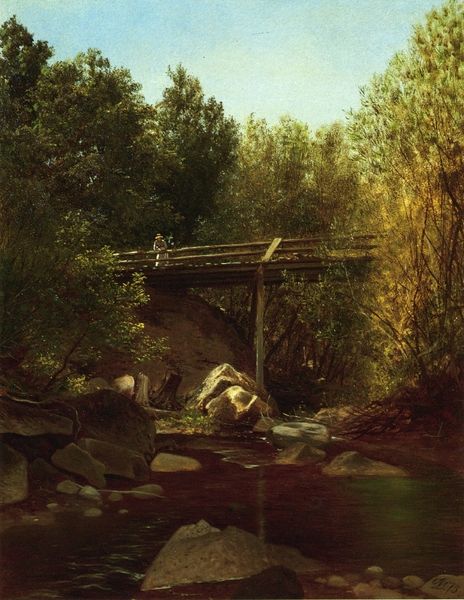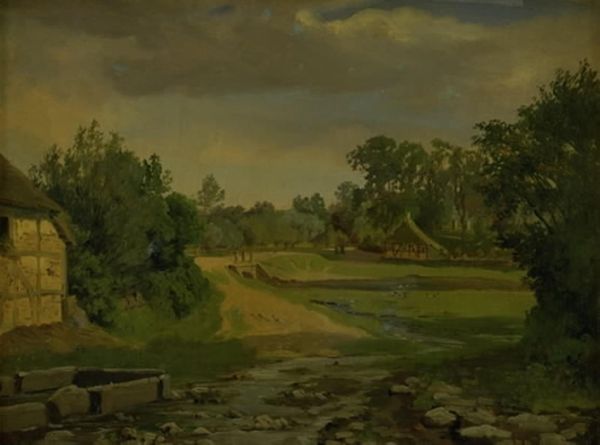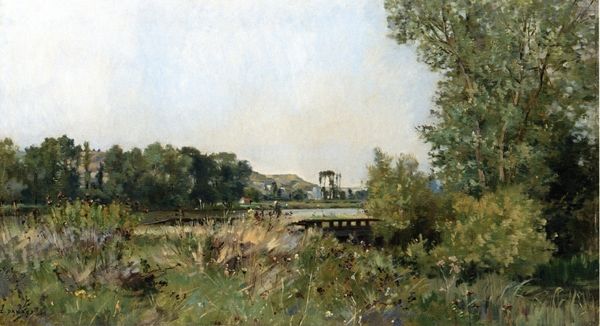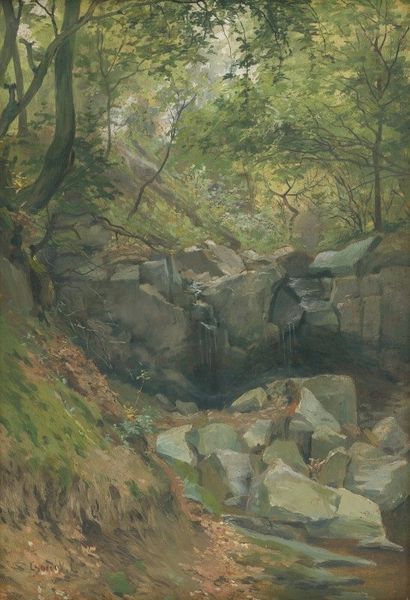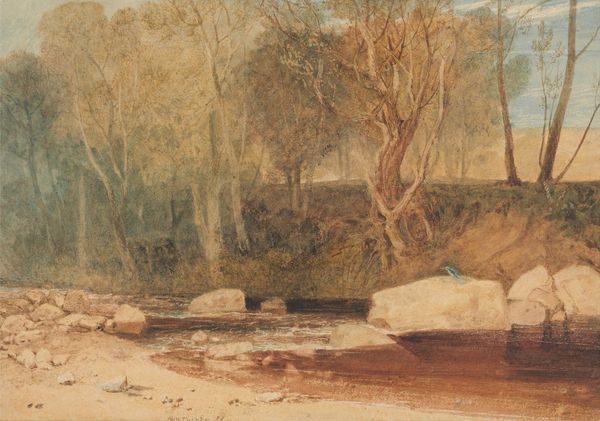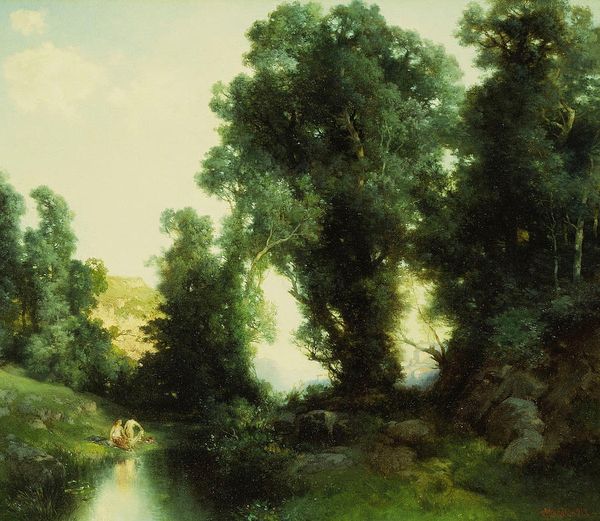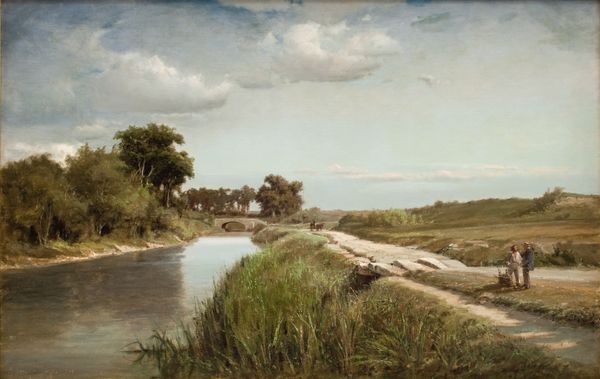
Copyright: Public Domain: Artvee
Santiago Rusiñol made this landscape of a bridge over a river using oil paints, a traditional medium beloved for its versatility. Rusiñol used the material qualities of oil paint to the fullest. Notice how the textures vary: smooth for the water, broken for the stonework, and dappled for the foliage. The visible brushstrokes add to this effect, lending a sense of immediacy to the scene. The artist likely worked en plein air, which is to say, outdoors. This approach, which gained popularity among painters in the 19th century, was made possible by advances in the manufacture of art supplies. Pre-mixed paints in tubes could be easily transported, allowing artists to capture fleeting moments and observe the natural world directly. The production of these ready-made art materials relied, of course, on industrial processes and globalized networks of trade. Ultimately, even a seemingly straightforward landscape painting owes much to material culture and the conditions of its making. By attending to these elements, we can appreciate the painting's significance in a fuller way.
Comments
No comments
Be the first to comment and join the conversation on the ultimate creative platform.
